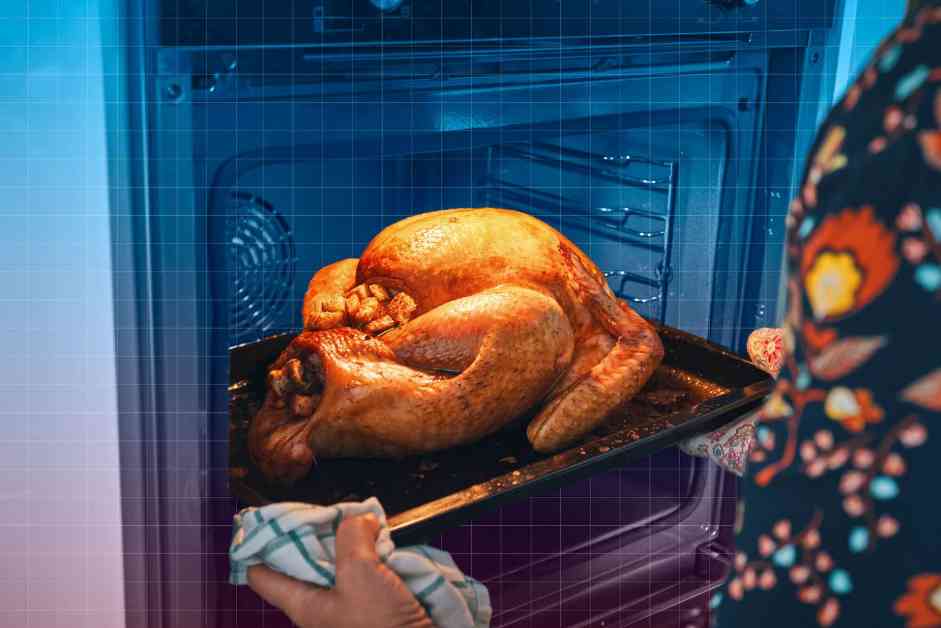Thanksgiving is just around the corner, and that means it’s time to start planning for the big feast. If you’re like many home cooks, thawing and cooking the turkey can be two of the most stressful parts of the holiday prep. Luckily, Charla Draper, a nationally recognized spokesperson for Butterball, is here to share her top tips for the fastest and safest way to thaw your Thanksgiving turkey. With more than 15 years of experience with Butterball’s Turkey Talk-Line, she knows a thing or two about serving up the best bird. So if you can trust anyone on this topic, you can trust Draper. With her guidance, you can say goodbye to turkey-related panic and hello to a juicy, perfectly cooked bird.
Draper states that the two safest methods are refrigerator thawing and the cold-water method.
For refrigerator thawing, Butterball recommends leaving the turkey in its original packaging, placing it breast-side up on a tray, and letting it hang out in the fridge for 24 hours for every 4 to 5 pounds of turkey. So if you have a 12-pound bird, that means at least three full days in the fridge.
On the other hand, the cold-water method involves submerging the packaged turkey in cold water and changing the water every 30 minutes. This method is much quicker and thaws the turkey at a rate of about 30 minutes per pound. The cold-water method is the way to go if you’re short on time. Draper recommends placing the turkey in a sink of cold water (or you can use a clean cooler or bathtub in a pinch). Whichever vessel holds your bird, “you will need to change the water every 30 minutes,” Draper notes. This is not something to take lightly. Keeping the water temperature low ensures that the turkey doesn’t get into the danger zone of foodborne illness.
There are physical and temperature-related signs to check to ensure that your turkey is fully thawed. When it comes to the physical signs, Draper says, “When you open the turkey package, the legs and wings should move freely.” She adds, “When you remove the neck and giblets, they should come out easily, and there should not be any ice crystals in the body cavity.” If your physical signs look good, check your turkey’s temperature with an instant-read thermometer. “The thermometer should register a temperature between 35ºF and 40ºF when the turkey is thawed,” explains Draper. If your signs are clear, you’re good to go. If the turkey still isn’t ready, pop it back into the fridge to finish thawing.
If you find yourself with a partially frozen bird on your hands, there are still ways to salvage the situation. Draper notes that you can still cook it but insists on using a meat thermometer to ensure food safety. For best quality, Butterball recommends cooking until the thigh reaches 180°F and the breast reaches 170ºF.
If you’ve completely forgotten to thaw your turkey, Draper says that you can cook a frozen turkey ”in a pinch.” She notes that it will take about 50% longer than a thawed bird. For example, she says, “A 12-pound turkey, frozen, would cook [for] four-and-a-half to five hours.” If thawed, that same 12-pound turkey (unstuffed) would typically take three to three-and-a-half hours at 325ºF. When in doubt, check out Butterball’s cooking calculator.
“Home cooks often shortchange the time it takes to thaw a turkey,” warns Draper. Some turkeys can take up to a week to fully thaw. She advises following the golden rule of 30 minutes of thawing time per pound of turkey for cold-water thawing and allowing one full day per 4 pounds of turkey for refrigerator thawing.
The fridge is the best place to store a thawed turkey, kept breast-side up on a tray and in the original packaging. Once thawed, the turkey should be cooked within four days to ensure food safety.
Turkey thawing can feel like a minefield, but having Draper and Butterball’s expert advice is a game-changer. You can feel much more confident going into the holiday season, knowing you’ve got the safest thawing methods in your back pocket. Whether you choose refrigerator thawing or the cold-water method, following these tips will help you have a stress-free Thanksgiving. Remember, give yourself plenty of time and use safe thawing methods for a perfectly cooked, juicy bird ready to be the star of your Thanksgiving feast. Happy holidays!




